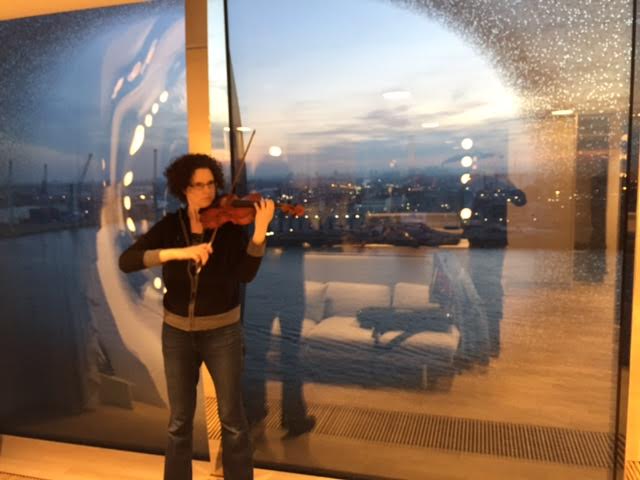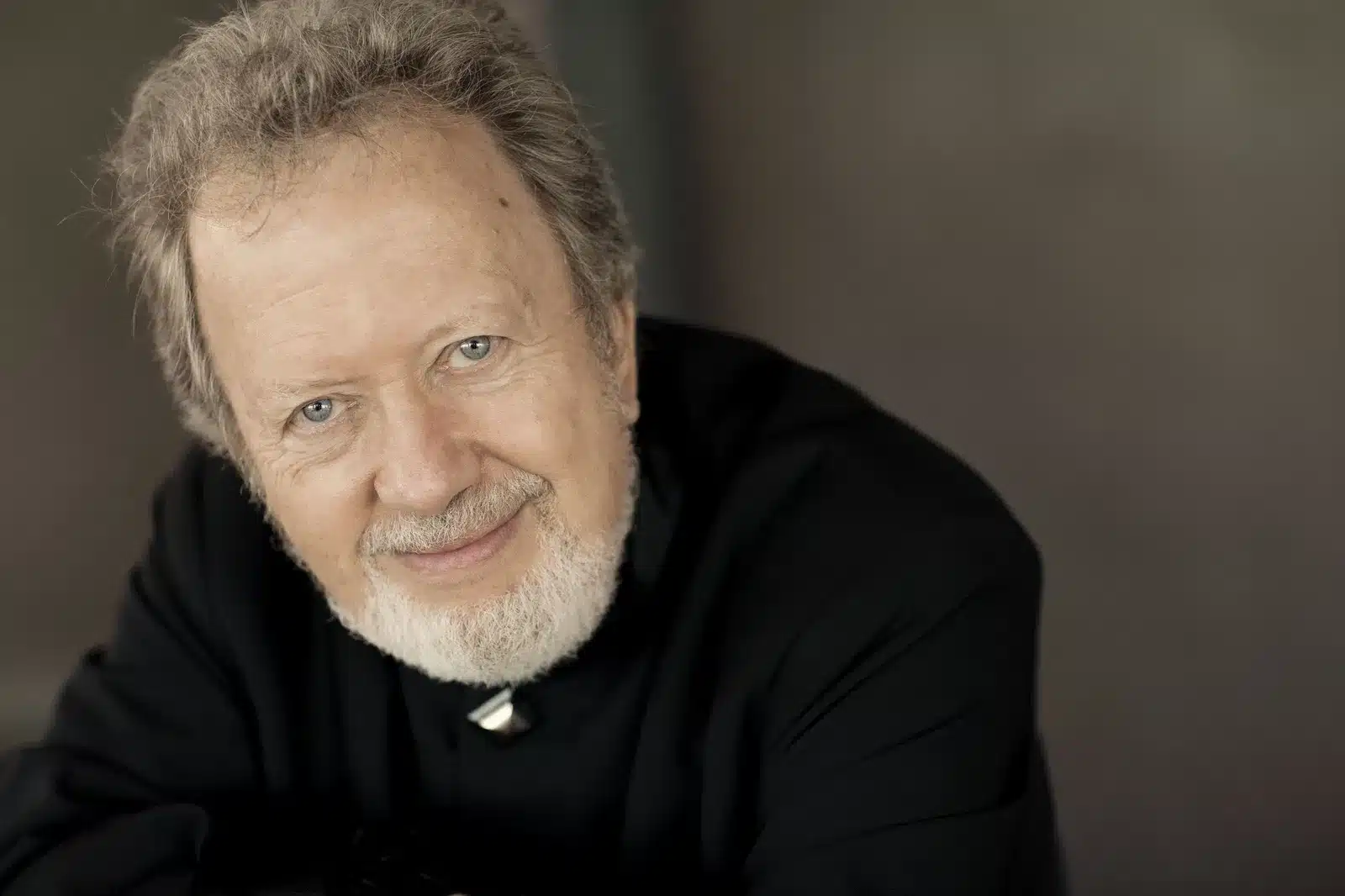What it’s like to play in the Elbphilharmonie
mainA report from our weekly diarist, Anthea Kreston, on the world’s newest concert hall:

As we approached the series of peninsulas in the heart of the industrial area of Hamburg, a rippling wave began to emerge above the city skyscrapers. As if in motion, the structure caught the light of the sky, of the water surrounding it on three sides, and the multi-colored lights of the city. This was the famed new hall – the Elbphilharmonie, covered in 500 individually designed pieces of glass, each curved and shaped, build upon a massive trapezoidal historic 7 story brick warehouse.
Inside houses three concert halls, the largest of which is arguably the most advanced acoustic structure in the world. In addition – offices, restaurants and stores, a public floor which breaches the old and new structures, and the highest habitable residencies in Hamburg, yours for the lowest astronomical price available. This is a building which has already begun to shape the city, if not the country, in the way the Sydney Opera House has done for that city.
When I first got the call from my quartet manager, the inimitable Sonia Simmenauer, asking me to put together a string trio for a performance at the opening festival for the Elbphilharmonie, Jason and I immediately thought of our old friend, Volker Jacobsen, the original violist of the Artemis Quartet – someone we had known from our student days together working with the Juilliard Quartet. The piece – notoriously difficult Schoenberg String Trio (written in 1946 while in a fitful and uncertain recovery period following a nearly fatal heat attack), would require hard practice and detailed score study to overcome the natural tendency to overthink in such pieces – to be unable to find flow and group swing. We were all up for it, and had two “warm-up” concerts in Berlin to get ready.
As our taxi crossed the bridge, traffic came to a standstill – people were bulging over the sidewalks and a line of cabs was dropping and picking up visitors. The dark red brick underbuilding itself is huge – and perfectly fills the unusual shape of the peninsula – only space for a slim walkway separates building from water. People crowded against the ticket lines – a rush of many languages – the hoity toity and hoi polloi next to one another. The entrance looks like a movie theater in some ways – not grand – and all visitors enter the structure through one portal – the longest escalator I have ever been on – it undulates and only towards the end can you glimpse the destination – an entire floor, open to the public, which is between old and new. As you enter this floor, you feel as if you are outside, not on the 8th floor of a building, with another 18 floors above. There was a strong breeze, and it was cold. The walls themselves are all tall, curved glass – open to outside, with moveable panels. The floor is a pedestrian brick.
As you walk around the perimeter, you feel as if you are on the bow of a huge steamer – the building sailing down the river. Surrounding this testament to culture is a living, breathing industrial area -cranes, warehouses, ships, and looking down I watch a huge container ship glide by, looking from above like a ship made of legos.
From here you can access the concert halls, restaurants, hotel and living quarters. Our dressing room was magnificent. A piano, a floor which curved up towards the ceiling, full bathroom, couches and even our own balcony, with an open curved window. The hall (we played in the chamber music hall) was a jewel box shaped hall with wooden walls hand-carved with miniature waves.
The concert was sold out, but I think also a concert featuring a demonstration on how to make toast out of bread, then the directors cut of “Babette’s Feast” on an iPhone screen would have played to a full hall. Concerts are overflowing, there is a buzz. The evening before YoYo Ma played in the big hall, and there was enthusiastic applause between his movements of Bach – a sure sign that there are people venturing out to hear music who are not all of the staid, well-trained sort. I always love applause between movements – it means we are forging new audiences.
So – flow was achieved, and we now have an offer to record the Schoenberg on a label, and a manager. I think this side project of the Humboldt Streichtrio will be a perfect addition to my regular job in the quartet. And, I feel like I was there at the beginning of an amazing addition to the cultural landscape of Germany.






Comments